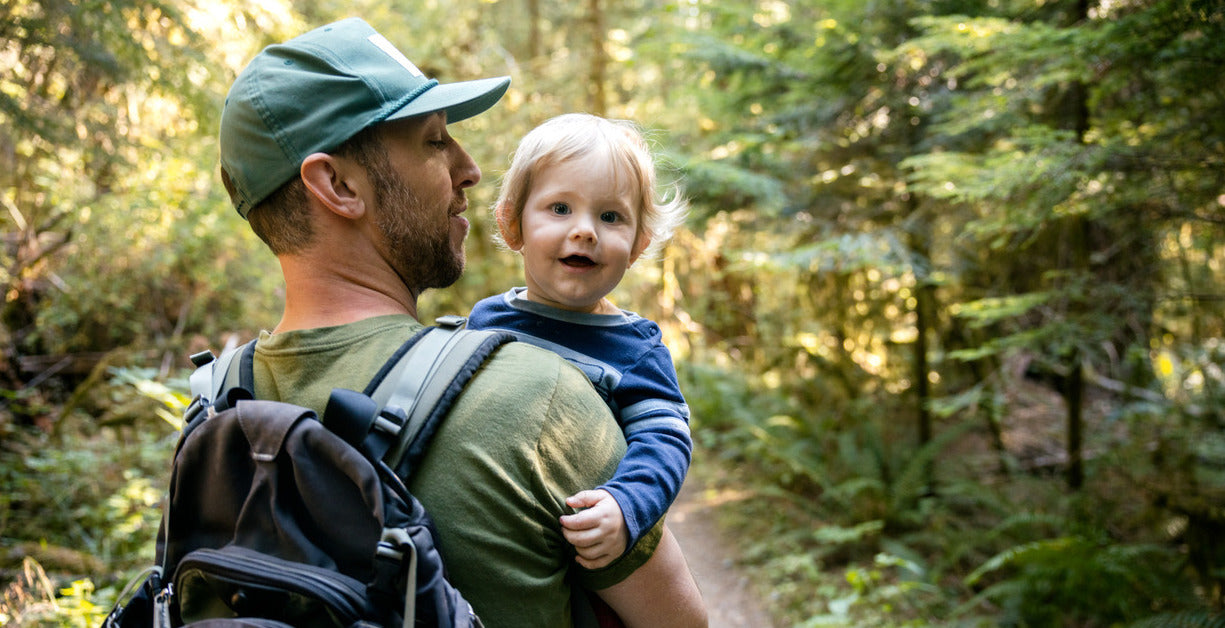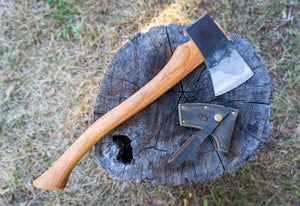
How to Choose a Travel Backpack
The sun shines through the trees as you hike up to a lookout. Everything about this moment is serene—except for the ache in your shoulders and back! One second, you’re enjoying the scenery, and the next, you’re thinking about your uncomfortable backpack.
Knowing how to choose a backpack helps you keep adventuring. The capacity and size of your backpack determine how comfortable you’ll be while traveling.
Explore our tips for picking a backpack, whether you need to carry your laptop to the office, haul textbooks around Mizzou’s campus or bring essentials for a weekend hike.
Jump to:
Step 1: Determine Your Activity
The first question you should ask yourself is why you need your backpack. What will you be carrying? How long will you be carrying it? Your answer will differ if you’re packing a bag for a spring break adventure or simply packing up for work.
Common types of packs:
- Day pack—Classic 18 to 30 L backpack for half to full-day trips.
- Lumbar pack—Great for half to full-day hikes. It straps around your waist and puts the weight on your hips.
- Backpacking packs—A larger, 30 to 70+ L backpack for heavier loads and longer hikes.
How Big of a Hiking Backpack Do I Need?
Hikers should be prepared for anything. If you’re going on a hiking trip, we recommend you carry the following essentials:
- Trail map
- Water
- High protein snacks
- Rain gear
- Firestarter
- First aid kit
- Tools (multitool pocket knife or duct tape)
- Flashlight
- Sunglasses and sunscreen
- Tarp or space blanket
You may also want a mirror for signaling, a watch, insect repellent and extra socks. During hunting seasons, hikers should consider wearing an orange vest if the hiking area is open to hunters.
Your choice of backpack depends on the length and difficulty of your hike. For short hikes in urban areas, you’ll probably only need water, snacks, sunscreen and a map. Longer hikes in the backcountry call for more preparation and packing.
| Hiking Backpack Sizes & Capacity | |
|
18–24 liters |
Tote essentials for a half-day hike. |
|
25–30 liters |
Extra space for food and water on a full-day hike. |
|
35–45 liters |
Even more space for layering in variable weather |
How Big of a Camping Backpack Do I Need?
When backpacking, you’ll hike to your first destination and camp overnight. Some people backpack for a day or so, while others take week to month-long backpacking trips. Overnight camping requires more supplies than needed on a day hike.
You’ll need the essentials from the previous hiking list, along with a tent, sleeping bag, stove, kitchen utensils, and plenty of food and hygiene supplies.
When considering how to pick a backpacking pack, follow the capacity suggestions in the table below based on the length of your adventure.
| Backpacking/Camping Bag Sizes & Capacity | |
|
45-50 liters |
In a mild climate, this backpack size will serve you |
|
50-70 liters |
With this size backpack, you’ll be ready for three to |
|
70+ liters |
The big bag! These packs will hold a ton of gear and |
How Big of an Office Backpack Do I Need?
You don’t need to haul around a 60 L backpack for your daily commute. Leave the heavy pack at home and opt for a lighter backpack when traveling to the office. A 10 to 15 L backpack is perfect for carrying your work essentials, like a laptop, charger, water bottle and notebook.
| Commuting Backpack Sizes & Capacity | |
|
<10 liters |
Choose a small sling or lumbar pack for basics like your |
|
10-19 liters |
Perfect for a 13” laptop and your basic work essentials. |
|
20-29 liters |
Enjoy more space for larger laptops (15 to 16”) and textbooks. |
Step 2: Measure Your Torso
No matter what storage capacity you choose, your backpack will never be comfortable if it’s too big or small for your body. Most backpacks are sized by torso length. Measuring your torso and comparing your measurements to the product’s size chart helps you pick a pack that will reduce stress on your shoulders and back.
How to Measure Your Torso
- Locate your C7 vertebra. If you tilt your head forward, you’ll feel the bump of your C7 vertebra where your shoulders meet your neck.
- Measure from your C7 vertebra to the top of your hip bones. You might need a friend to help you!
- Compare your measurement to the product’s size chart.
How to Measure Your Waist
You may need to measure your waist to ensure the hip straps work for you.
- Find your hip bone.
- Wrap a tape measure around the top of your hips. For some people, this placement will be higher than your beltline, and the size you measure may differ from your pant size.
- Compare your measurement to the product’s size chart.
Step 3: Test Your Backpack
Before a three-day backpacking trip, test out your new backpack at home. We recommend you practice packing your bag and fill it up to about 15 lbs. With some weight in your pack, you’ll be able to feel where you need to make adjustments for your comfort.
Many backpacks allow you to adjust the torso, back panels, and hip and chest straps. Once your backpack is adjusted comfortably, you can enjoy the day.
- Hip strap. Around 80% of your pack’s weight should be on your hips. Adjusting your hip belt strap helps evenly distribute weight to your hips, taking pressure off your shoulders and back.
- Shoulder straps. Your straps should sit on your shoulders without a gap, and the top of your backpack shouldn’t lean backward. When you tighten these straps, you pull your backpack closer to you, which reduces strain on your shoulders.
- Sternum straps. Stop your shoulder straps from moving while you walk. Adjusting your sternum strap helps your shoulder straps stay still. If you encounter rugged terrain, your pack is less likely to throw you off balance with your sternum strap in place.
- Load-lifter straps. These straps are available on some backpacks to help you carry heavy gear comfortably. When you cinch these straps, your backpack moves closer to your body, easing pressure on your lumbar spine.
Find Your New Backpack at Crane’s Country Store
Order the perfect pack for your adventure, whether hiking in Columbia, MO, or toting your daily necessities. Crane’s Country Store offers elevated, outdoor-ready backpacks from brands you love.
Shop Filson dry and tin cloth backpacks for hunting or hiking, or explore our colorful selection of Fjallraven Kanken backpacks to enhance your school year.
We also carry ENO dry packs for camping and hammocking. Need something for the office? We’ve got you covered with waxed canvas bags from The Normal Brand.
Wherever you go, we have the pack for your back.
Shop at Crane’s Country Store online and find your next backpack.









